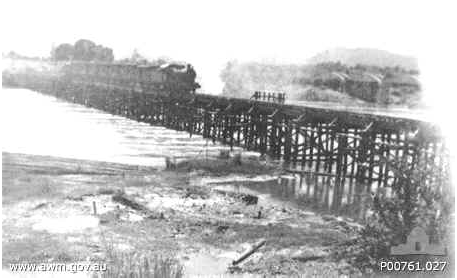|
One wonders just how much of what passes for history is actually real history. In addition, one questions just how much of history is rewritten by those with another agenda. So it is with the novel, The Bridge over the River Kwai by the French novelist, Pierre Boulle. He was a prisoner of the Japanese in Southwest Asia during WWII. Boulle's novel was turned into the 1957 blockbuster film, The Bridge on the River Kwai. If the difference in the title of the novel and film were the only variance in the history, there would be little reason to write this article. However, I'll be going to the bridge over/on the River Kwai to truly understand part of WWII and the plight of the Allies in Japanese POW camps. This article is written to begin the process to really understand the true history of that infamous bridge and the POWs that were forced to build it. I will be going soon to Kanchanaburi, Thailand where the bridge stands. There I will learn more facts firsthand about this history lesson. The following is what I know of the bridge. The Japanese needed for their war effort to construct a 258-mile railroad called the Burma Railway, which stretched from Rangoon, Burma to Bangkok, Thailand. An interesting aside to this WWII situation with the bridge over the Kwai River is that Rangoon is where Aung San Suu Kyi, the Nobel Laureate, has been under house arrest for many years. The Burma Railway was a major and necessary task for the Japanese during WWII. They had to support their army in Burma; therefore, they needed the railroad. The Japanese started construction at both Rangoon and at Bangkok at the same time and built toward each other in 1942-43. According to the Commonwealth War Graves Commission (CWGC) about 13,000 POWs and 80,000-100,000 civilians died during the construction of the railroad. The POWs called the Burma Railway the "Death Railway" due to the human carnage resulting in its construction. Now, let's look at some of Boulle's mistakes and/or intentional errors. While he was a prisoner of the Japanese, he never was over or on the River Kwai. In addition, he also was a prisoner with the French POWs and never knew a British commander like the one in his book or the movie. Some believe that he was writing about some French officer but changed his nationality. This mixture of truth and falsehood was good for Boulle but bad for history. More interestingly, there was no bridge over/on the River Kwai even though Boulle thought there had been. There was in fact a bridge over the Mae Klong River that later was renamed the Kwai Yai, which means in Thai, Big Kwai. The Thais renamed the river in the 1960s because of the notoriety of the film, The Bridge on the River Kwai. Many tourists came to see the bridge not knowing that it wasn't built on the Kwai. The place where the bridge was built was on a tributary of the Big Kwai now called the Kwai Noi or Little Kwai. This is just a couple miles north of the city of Kanchanaburi at a place called Tha Ma Kham. The real Allied commander at the POW camp was the British Lieutenant Colonel Philip Toosey, who wasn't anything like the character in the film according to his soldiers. He was not about to assist the Japanese in the construction of the bridge regardless of what river it bisected. There were a number of means that Toosey used to slow down the construction of the bridges that would link Rangoon and Bangkok via a railroad. Actually, there were two bridges built during that time period-one wood and the other steel. 
From the Australian War Memorial Toosey and his fellow prisoners employed numerous acts of sabotage including mixing a poor grade of concrete to amassing white ants with termites that would eat away at the wooden bridge. Toosey worked hard at sabotage, but the Allies bombed first the wooden bridge, which was completed in February 1943 and latter the steel bridge, which was completed in April of that year. The Burma-Thai Railway was completed in October 17, 1943. Sick and malnourished prisoners accomplished that Herculean-task. They laid a half-mile of track per day for just over a year. The steel bridge was bombed many times between February through June of 1945. One single span of the steel bridge was destroyed during an air raid in February, and two additional spans were destroyed between April and June of that year. 
From the Australian War Memorial Japan rebuilt the steel bridge as a part of its war reparations. Interestingly, the steel bridge is still used today. 
From Wikipedia Toosey's reflection about the time of his imprisonment and the building of the bridge said, "People say to me 'what a ghastly experience' and I say, 'My dear friend, it was nothing of the sort. It was an experience, which I could not go through again, but I wouldn't have missed it for anything. It taught me so much about human beings." Toosey learn a lesson that is ages old-without pain, there is no gain. We all seem to learn that lesson of history only when we go through pain. It is an extremely difficult lesson of history to learn during the good times of life. Another interesting aside to the bridges over/on the Kwai Noi or Little Kwai River was completed a couple of weeks after my actual birthday in January 20, 1943. While the Japanese were forcing the British POWs to complete the bridge, my mother was forcing me out into the world, and my father was preparing his battalion to force the Japanese off Saipan.
Visit the Burma Independence page to read more about this topic.
|







